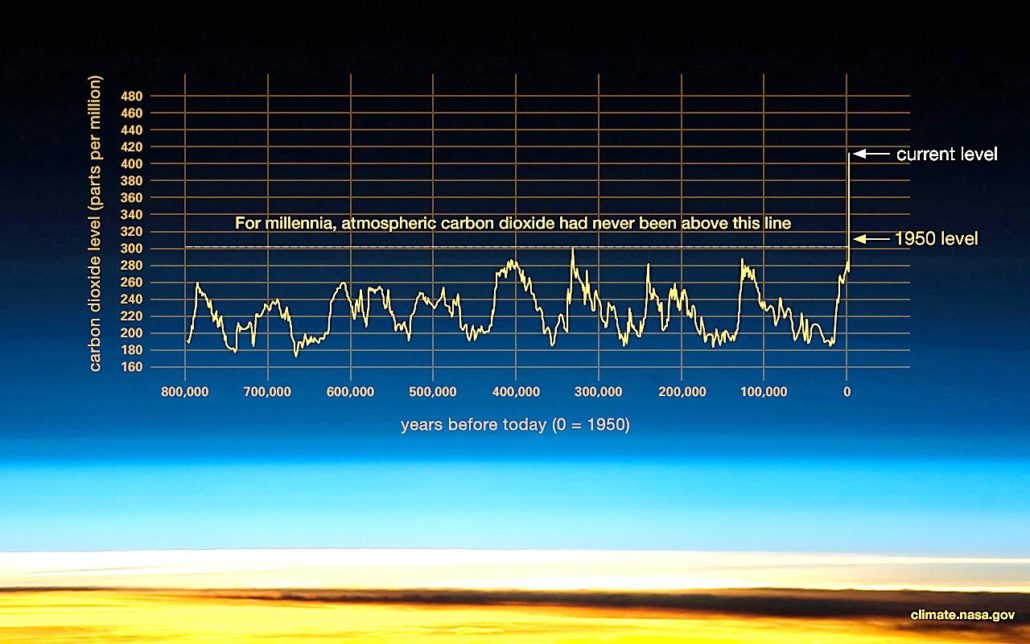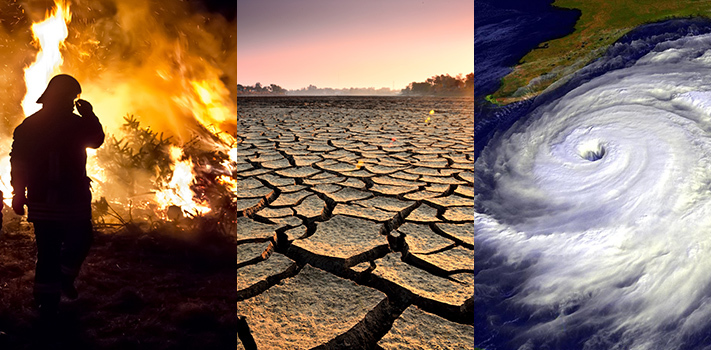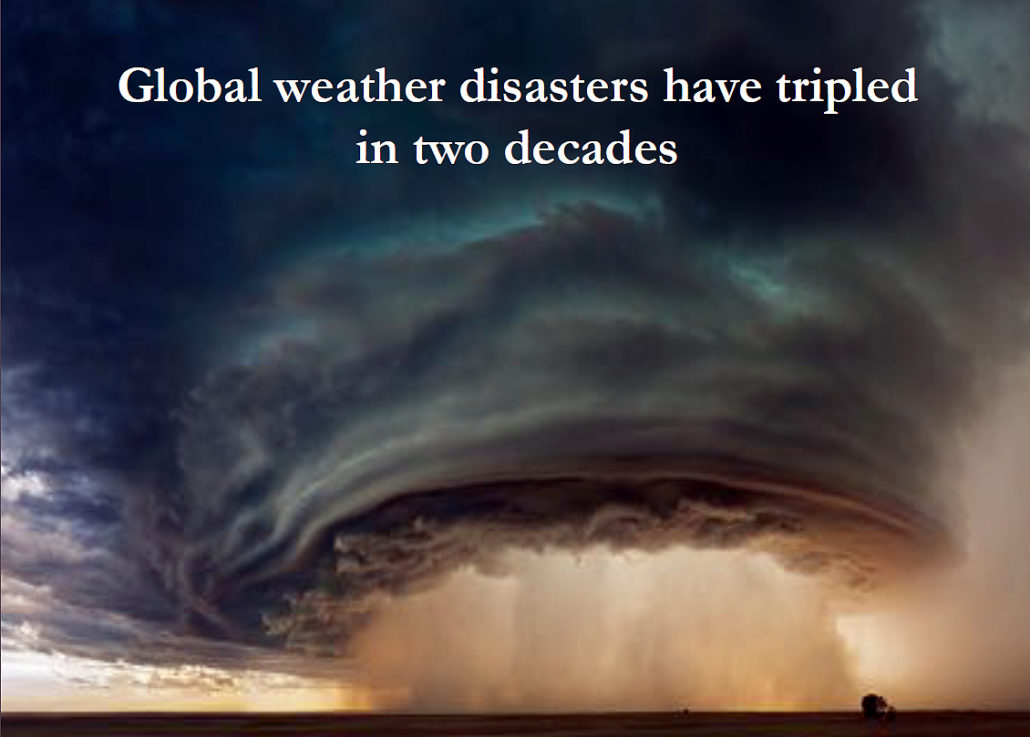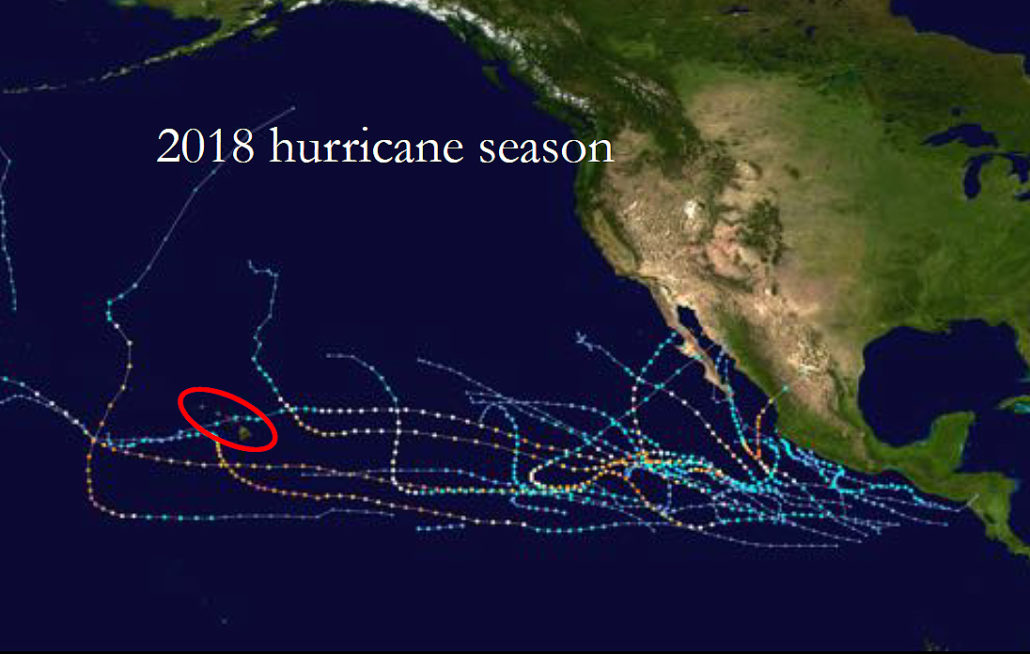Climate Reality Check for Hawaii Island’s County Council
“Scientific evidence for warming of the climate system is unequivocal…”. Intergovernmental Panel on Climate Change
Chip Fletcher, UH (Manoa) professor of earth sciences visited the Big island this week to meet with the County Council — the meeting came be summed up as a real and live wake up call on the global and local impacts of an emerging Climate Crisis now underway, yes …Crisis. this November, 11,000 scientists from across the globe declared a global Climate Crisis. Since the 1970’s, climate change awareness (and denial) has grown in the public mindset. You may know it by several names: Global Warming and Climate Change, and most recently, Global Heating (IPCC 2019 report), and now as a “Climate Crisis”.
In the words of Professor Fletcher, “the next few years will be most important in human history.”
- The last five years (2015-2019) have seen the five warmest Septembers on record.
- Year-to-date global temperature (Jan-Sep) has been the second warmest on record.
- Hawaii has also experienced record air and ocean temperatures this year.
- Honolulu set 29 record highs. Lihue tied or broke record highs 20 days in a row.
Tying or breaking a record high temperature is impressive. Doing it several days in a row? Even more notable. But to do it 20 days in a row? That’s unheard of, but not this year in Hawaii. The Aloha State just wrapped up probably its warmest summer ever, obliterating records left and right and over and over again. Hawaii is yet another location feeling the heat in an ever-increasing hot world.
From 1950 to 2018, only 14 nights failed to drop below 80 degrees. This year has featured 19 such nights. The combination of toasty daytime highs and even steamier nighttime lows has helped 2019 claim the top spot for having the hottest calendar day on record in Honolulu. It’s not just a phenomenon local to Honolulu. In fact, of the four long-running climate sites spread along the Hawaiian archipelago, three of them saw their warmest summer on record, only Hilo, did not. Hilo did, however, experience its hottest August on record date, with a daily average of 80.1 F.
The primary heat-driver is humans, and our twisted dependency on burning fossil fuels for energy. The more we burn, the more we turn up Planet Earth’s thermostat, as we emit more and more carbon dioxide (CO2) and other greenhouse gas emissions which continue to build up in the Earth’s atmosphere and oceans.
Ignoring all the danger signs, and assuming we’re not responsible for our actions and planetary reactions or consequences is to …deny reality.


There is more than enough data to convince anyone who brothers to take the time to become quickly educated on “the” issue of our time — one that is impacting current and future generations.
And if we can look beyond ourselves and to the world around us we will discover the cause & effect climate impacts of our actions, the price of our absence (on a global-scale) of acting on meaningful mitigation actions, and the results which is taking our planet on the path to what scientists now calling a “Sixth Extinction Event”.
Over the last half a billion years, there have been five (5) mass extinctions, when the diversity of life on Earth suddenly and dramatically contracted. Scientists around the world are currently monitoring the Sixth Extinction, predicted to be the most devastating extinction event since the asteroid impact that wiped out the dinosaurs.
When the Hawaii County Council invited Professor Fletcher to provide an educational presentation on the developing Climate Crisis, it represented more than an opportunity to hear from Hawaii’s foremost expert on the subject, it was an important initial step by the County to learn about an issue bigger than Hawaii itself, one with significant social, economic, and environmental implications for all residents and the future of the state.

During Professor Fletcher’s presentation the Council learned of the new reality of super storms, rain bombs, flooding, increasing frequency of Cat 5 hurricanes, and the macro trends and consequences of rising sea levels and hotter temperatures; all among the threats Hawaii and the rest of the world are facing with today’s Climate Crisis.

There may be a middle point on the doomsday climate clock between Professor Fletcher’s dire climate deadline 10 years left to act or else, and on the far side of reality where the mantra is ..don’t worry, be happy, deny the science — sponsored by the fossil fuel industry, its paid political agents, and its supply chain sycophants.
One aspect of the Climate Crisis is certain, Hawaii and its remote location is not immune to the effects of a heating planet.
On example now unfolding in real time: the State’s and County’s economy depends on tourism, and tourists don’t generally fly 6 hours to snorkel in fields of dead coral, look for missing reef fish, or swim from diminishing sand beaches, or even plan a vacation arrival in time to witness the aftermath of a super storm event.
Hawaii’s residents, and elements of the state’s real estate and insurance industry sectors, are paying attention with increasingly concerned as to how ill-prepared Counties and the State’s government are for the next super storm. If recent climate-fueled super hurricane events are any example, Puerto Rico, Cuba, and the Bahama’s, as island states and communities they suffered extreme consequences from not being prepared for the new climate reality of super storm events. Denying or ignoring a threat does not make it any less a threat.
What can Hawaii do?
First, we must address the state’s the current power, water, food, shelter infrastructure inadequacies when it comes to preparedness and post-event recovery.
BeyondKona.com will explore these problems, options, and solutions in forthcoming articles.
Copies of Professor Fletcher’s presentations available through your Hawaii County Council representative.
Subject related past BeyondKona.com articles include:




Leave a Reply
Join the Community discussion now - your email address will not be published, remains secure and confidential. Mahalo.